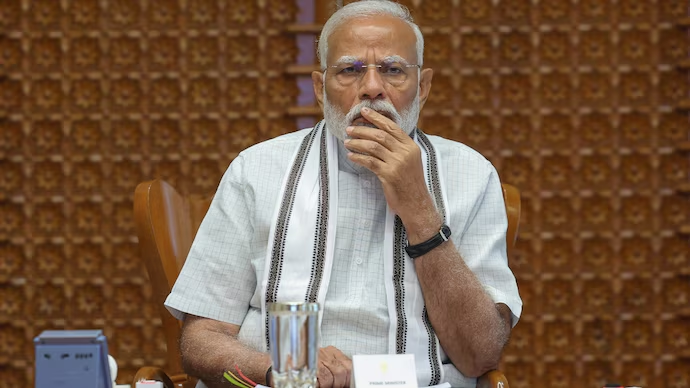The Bharatiya Janata Party (BJP) has long danced around an unwritten code: leaders over 75 are nudged into the shadows, their active roles swapped for ceremonial ones. This so-called “75-year rule” has been whispered about in party corridors, cited by leaders like Anandiben Patel when she stepped down as Gujarat Chief Minister in 2016, and used to ease out stalwarts like L.K. Advani and Murli Manohar Joshi.
Yet, as Prime Minister Narendra Modi crossed the 75-year threshold on September 17, 2025, the rule suddenly feels like a mirage—a convenient fiction that bends when power demands it. Is this age limit a genuine principle or a selective mask, donned and discarded at the party’s whim? The BJP’s 75-year rule has never been etched in its constitution. Rajnath Singh and Amit Shah have both clarified it’s not a formal diktat, and the Indian Constitution imposes no upper age cap on political office.
This lack of codification gives the party wiggle room, and it’s been used liberally. Hema Malini, well past 75, was fielded in the 2024 elections. B.S. Yediyurappa, another septuagenarian, has clung to influence in Karnataka. These exceptions suggest the rule is less about principle and more about pragmatism. When a leader’s clout or electoral value outweighs their age, the BJP seems happy to look the other way. So why the fuss about Modi’s milestone?
Modi is no ordinary leader. He is the BJP’s talisman, its vote magnet, and its ideological anchor. His 75th birthday didn’t spark retirement rumours but rather affirmations of his indispensability. Party leaders, from Shah to J.P. Nadda, have declared Modi will lead beyond 2029, framing him as the architect of a “Viksit Bharat” by 2047. This isn’t just loyalty; it’s strategy. Modi’s personal brand towers over the party, and his exit would leave a vacuum no successor—Shah, Yogi Adityanath, or otherwise—can fill yet.
The BJP’s electoral machine runs on Modi’s charisma, and sidelining him would be akin to dismantling their winning formula. The 75-year rule, if it ever existed, was never meant for a leader of his stature. But this raises a prickly question: is the rule just a tool to manage inconvenient veterans? Advani and Joshi, both towering figures, were gently pushed into the “Margdarshak Mandal”—a glorified retirement home for BJP elders—once their utility waned.
Anandiben’s exit was spun as adherence to the age norm, but whispers of internal pressures suggest otherwise. The rule seems to surface when the party needs to clear the deck, but vanishes when loyalty or leverage is at stake. This selective application smells of double standards. If age is a barrier for some, why not all? And if Modi is exempt, what does that say about the party’s commitment to its own norms? The broader issue is what this means for the BJP’s future.
Modi’s extended reign delays the grooming of a new generation. Shah, Yogi, or even Nitin Gadkari are seasoned, but none have been tested as the party’s face. A sudden transition could spark infighting, especially in a party where factionalism simmers beneath the surface. The RSS, the BJP’s ideological parent, may push for a collective leadership model, but Modi’s larger-than-life presence has sidelined such experiments. By bending the age rule for him, the BJP risks creating a cult of personality, where loyalty to one man trumps institutional renewal.
As Modi strides past 75, the 75-year rule looks less like a principle and more like a political prop—wielded to retire rivals, placate cadres, or justify tough calls. The BJP’s supporters may cheer Modi’s exemption, but they should ask: what happens when the exception becomes the rule? If age is no bar for Modi, why was it for others? And if the party can rewrite its norms for one man, what else might it bend when power is at stake? The answers could shape not just the BJP, but India’s political landscape for years to come.
